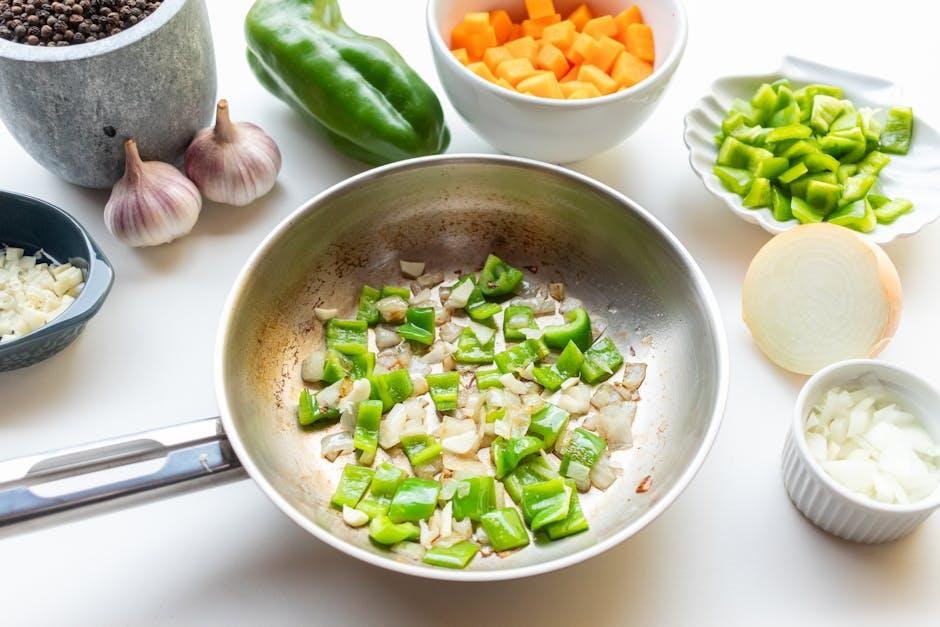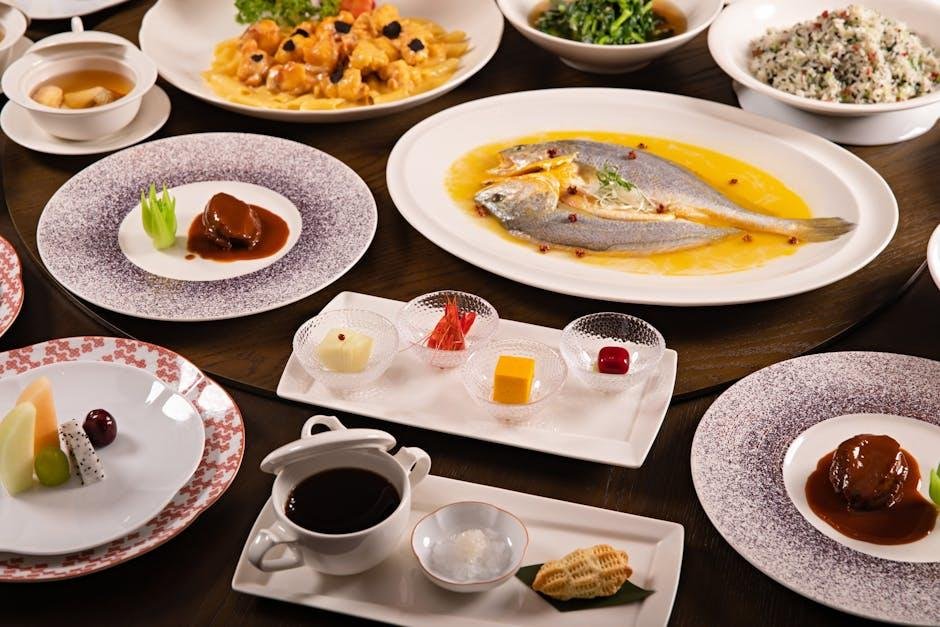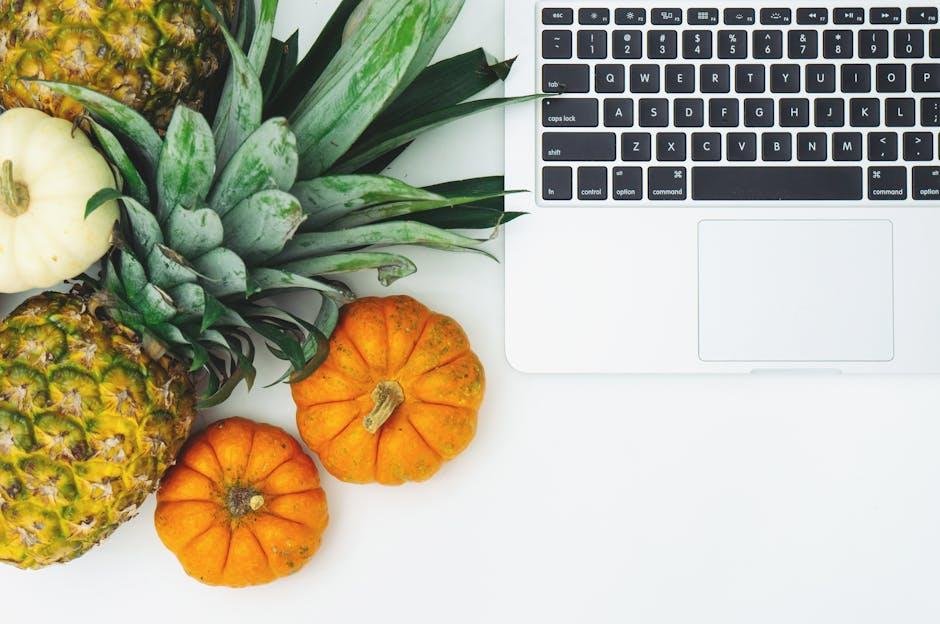Clean Eating Made Easy: Beginner’s Guide
in a world where convenience often trumps nutrition, the concept of clean eating can feel like an overwhelming commitment to some. However, embracing a cleaner diet doesn’t have to be a intricate or daunting journey. Whether you’re a seasoned foodie or a kitchen novice, the idea of nourishing yoru body with whole, unprocessed foods can be both simple and satisfying. This beginner’s guide aims to demystify clean eating, breaking it down into uncomplicated principles and practical steps. by focusing on fresh ingredients, mindful choices, and easy meal preparations, you’ll discover that clean eating is not just a diet, but a lifestyle that can enhance your wellbeing and make culinary exploration enjoyable. Join us as we unravel the basics, share tips, and inspire you to embark on a wholesome culinary adventure that’s both delicious and straightforward. Your journey towards cleaner,healthier eating begins here!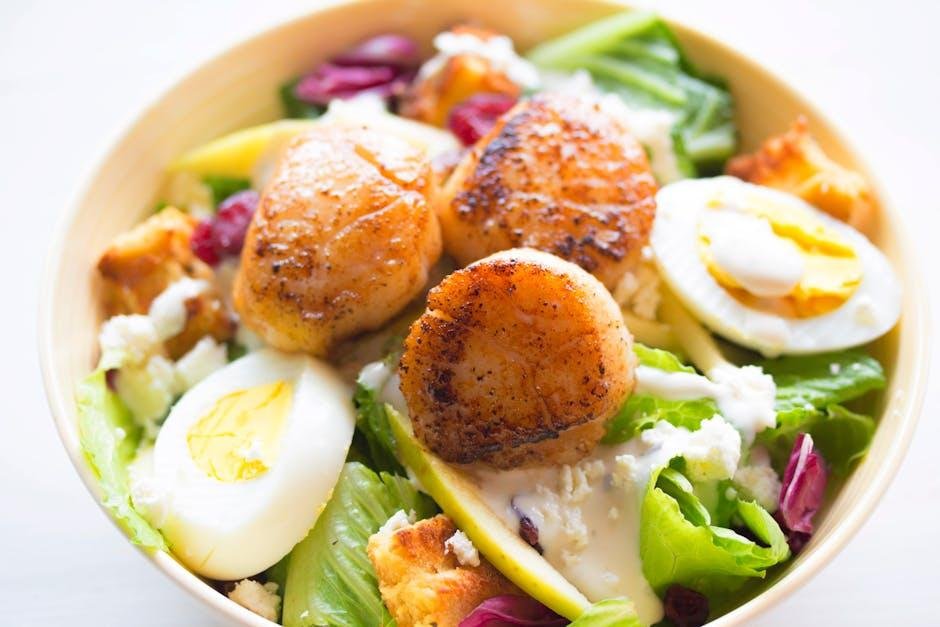
Exploring the Fundamentals of Clean Eating
Clean eating is fundamentally about embracing whole, unprocessed foods that nourish the body and support overall health. This approach to eating emphasizes the importance of fresh fruits and vegetables, whole grains, lean proteins, and healthy fats. By steering clear of packaged foods that often contain artificial additives, sugars, and unhealthy fats, individuals can help their bodies function optimally. Crafting meals around these core components not only enhances flavor but also promotes a deeper connection with the food we consume. Understanding the basics of food labels is essential; look for ingredients that are familiar and pronounceable, ensuring that your meals are clean and nourishing.
To make clean eating more approachable, consider integrating the following strategies into your daily routine:
- Plan your meals: Design weekly menus to minimize last-minute unhealthy choices.
- Shop the perimeter of the grocery store: This is where fresh produce, dairy, and meats are typically located.
- Cook at home: Preparing your meals allows you to control the ingredients and avoid hidden additives.
- Stay hydrated: Opt for water over sugary beverages to enhance health and mental clarity.
| Food Group | Examples |
|---|---|
| Fruits | Apples, Bananas, Berries |
| Vegetables | Spinach, Broccoli, Carrots |
| Grains | Quinoa, Brown Rice, Oats |
| Proteins | chicken, Tofu, Lentils |
| Fats | Avocado, Nuts, Olive Oil |

Nourishing Your Plate: Key Food Groups and Their Benefits
Creating a vibrant and healthy plate begins with understanding the essential food groups that nourish our bodies. Each group plays a crucial role in supporting optimal health and well-being. Focus on incorporating a variety of colorful fruits and vegetables, which are packed with vitamins, minerals, and antioxidants. Leafy greens like spinach and kale can provide essential nutrients, while fruits such as berries and citrus enhance your immune system and overall vitality. Aim for whole grains like quinoa and brown rice, which offer fiber and sustained energy, promoting digestive health and maintaining blood sugar levels.
Additionally,don’t forget the importance of lean proteins such as chicken,fish,legumes,and nuts,which are vital for muscle repair and overall growth. Healthy fats, found in avocados and olive oil, contribute to heart health while providing necessary energy. To give you a quick reference for crafting a balanced plate, consider the following nutritional breakdown:
| food Group | Benefits |
|---|---|
| Fruits & Vegetables | Rich in vitamins, minerals, and antioxidants |
| Whole grains | High in fiber, supports digestion and energy |
| Lean Proteins | Essential for muscle repair and growth |
| Healthy Fats | Promotes heart health and provides energy |
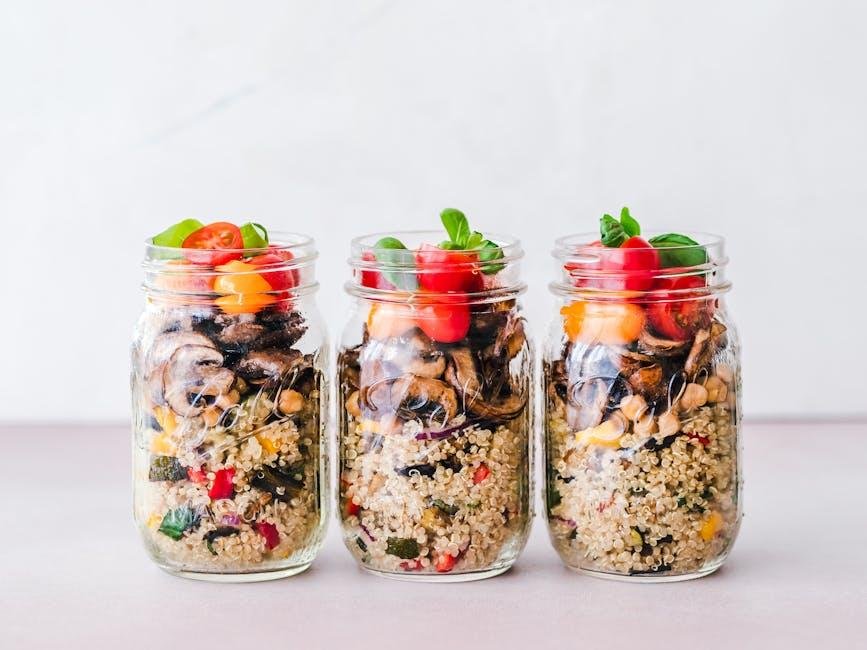
Mastering Meal Prep: Strategies for Success
To streamline your cooking routine and ensure your meals are both nutritious and delicious, start by planning your weekly menu. Create a list of recipes that cater to your dietary needs and preferences. Doing so will not only help you avoid impulse purchases but also simplify your grocery shopping. Here are a few tips to enhance your meal prep experience:
- Designate a specific day for meal prep, such as Sundays.
- Batch cook staple items like grains, proteins, and roasted vegetables.
- Invest in high-quality containers to keep your meals fresh.
- Label your meals to keep track of what’s in your fridge.
Along with effective planning, it’s essential to adopt a flexible mindset. Allow room for creativity in your meal prep; this can definitely help you avoid boredom with your meals. Here are some strategies to think outside the box:
- Mix and match ingredients to create new flavor profiles.
- Incorporate seasonal fruits and vegetables for variety.
- Experiment with different cooking methods, such as grilling or sautéing.
- Keep a backup supply of quick options like frozen veggies or canned beans.
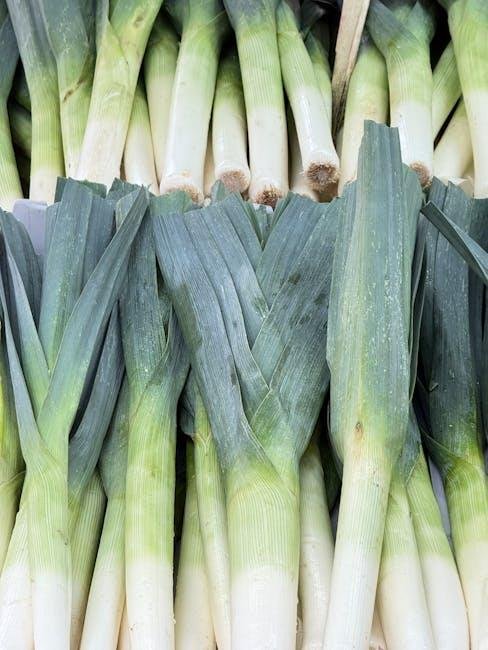
Overcoming Common Challenges in Your Clean Eating Journey
Embarking on a clean eating journey can come with its own set of hurdles, but there are effective strategies to navigate these challenges. One of the most common obstacles is the overwhelming amount of details available. To simplify your journey, focus on understanding basic principles rather than trying to absorb everything at once. Create a personalized roadmap that emphasizes whole foods and balanced meals. Consider these tips to streamline your approach:
- Meal Prep: Plan your meals in advance to save time and reduce stress during busy weeks.
- Mindful Shopping: Stick to the perimeter of the store where fresh produce and whole foods are typically found.
- Stay Hydrated: Often,hunger can be confused with thirst; keep a water bottle handy to ensure you’re well-hydrated.
Another challenge that many face is the temptation of convenience foods.It’s vital to find alternatives that satisfy quick meal needs without straying from your goals.Make a list of your favorite quick recipes that utilize clean ingredients. You’ll be surprised how simple it is to prepare healthy meals in a pinch. Here’s a quick comparison of clean vs.conventional snacks:
| Clean Snack Options | Conventional Snack Options |
|---|---|
| Fresh fruit | Processed snack bars |
| Veggies with hummus | Chips and dip |
| greek yogurt | Flavored yogurts with added sugar |
The Conclusion
As we wrap up our exploration of clean eating, it’s clear that this lifestyle doesn’t have to be a daunting task. With a little planning, a dash of creativity, and a willingness to embrace new flavors, you can transform your meals into nourishing feasts that energize your body and support your well-being. Remember,the journey toward clean eating is not a sprint but a marathon; it’s about making sustainable choices that resonate with your lifestyle.
Armed with the tips and strategies outlined in this guide, you can take confident steps into the vibrant world of clean foods. Start small, experiment with ingredients, and allow yourself the freedom to adapt. Each meal is an opportunity to cultivate a deeper connection with your food, savoring not only the taste but also the process of nourishing yourself.
So, as you embark on this culinary adventure, remember that clean eating is about balance, joy, and discovery. With every bite, you have the power to choose health – and that’s a step worth celebrating. Here’s to a delicious journey ahead!


